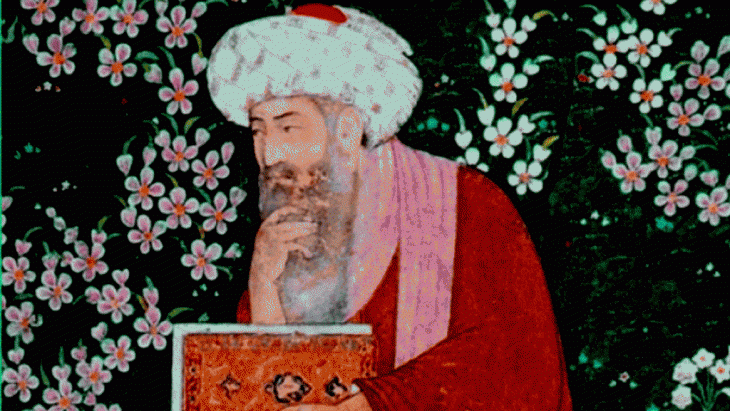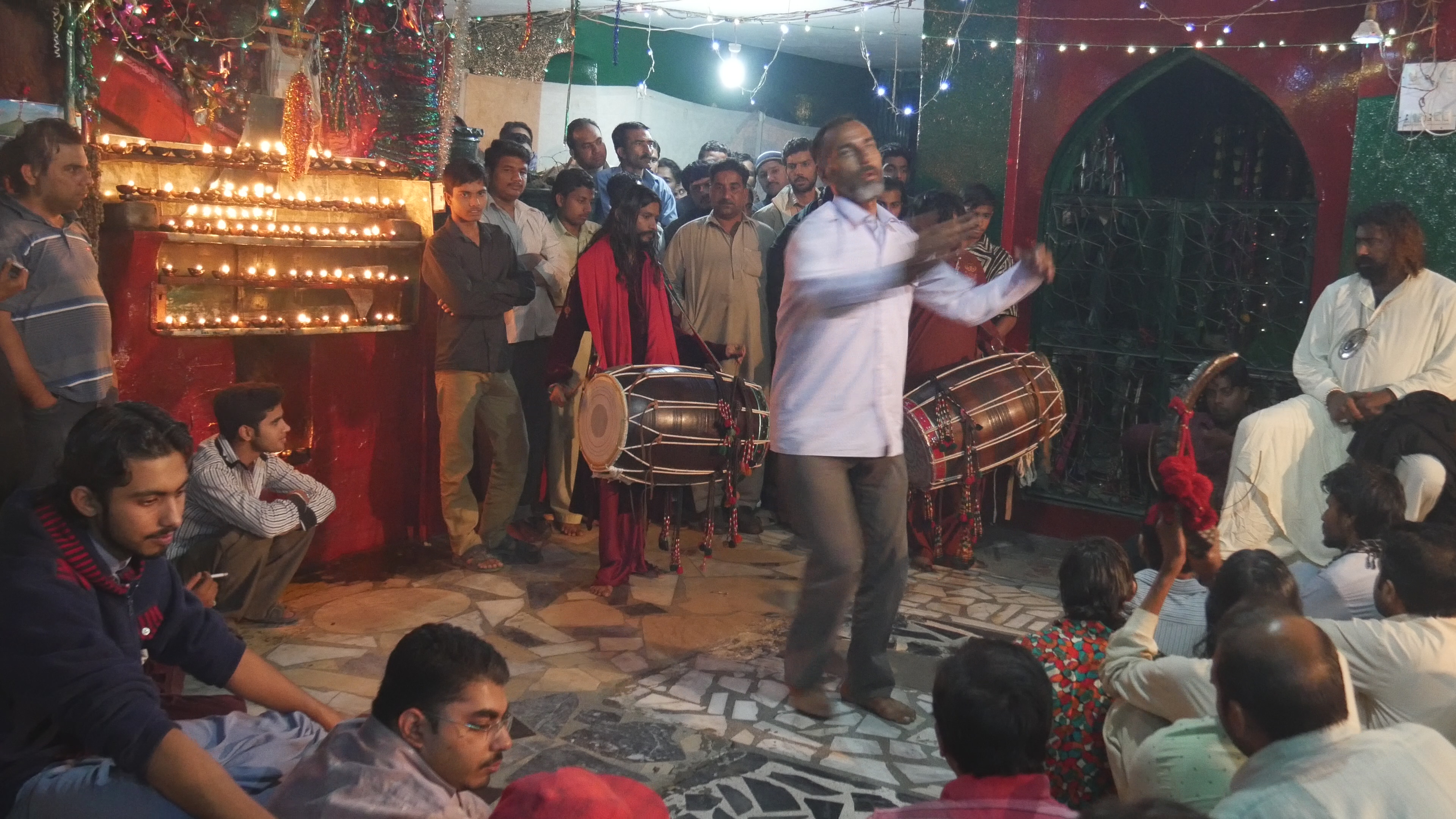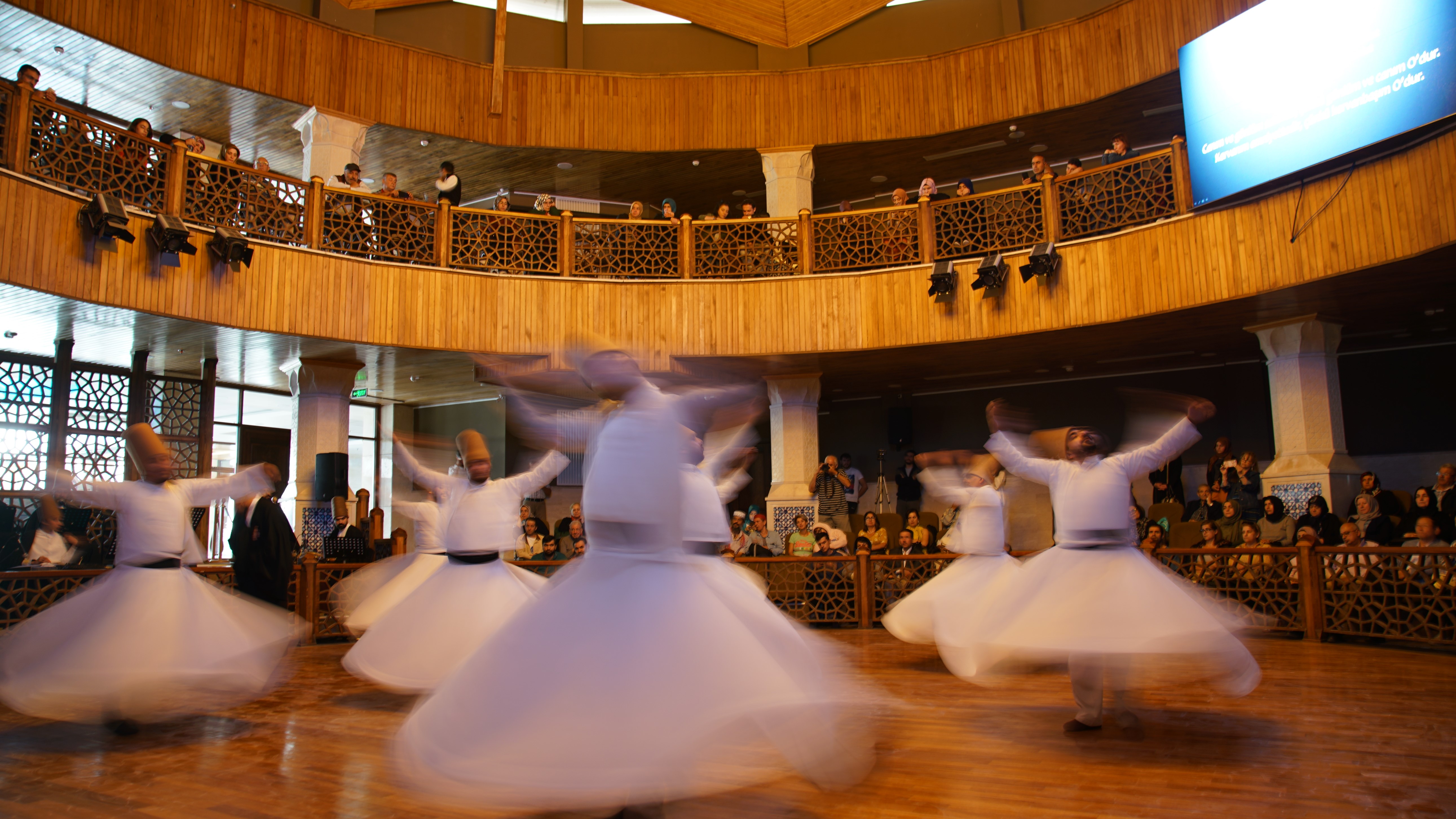Sufism is not just Muslim

Of all the many facets of Islam, Sufism – let there be no dispute about the word; it is evident that there is no single, unified ideology behind it – is perhaps the most mysterious and the most powerful. Sufism is often described as "Islamic mysticism". But as a description, that falls short, especially when seen from the perspective of Christian mysticism. In Christianity, mysticism has remained a marginal phenomenon, primarily supported by individuals. Sufism, on the other hand, speaks to the full range of the faithful.
Since the Middle Ages, Sufism has been organised in large, transnational schools or orders. For long periods of time throughout the history of Sufism, these schools, each of which can be traced by to a charismatic founding figure, have shaped – and continue to shape – the way the majority of Muslims see Islam. Sufism becomes tangible and even comprehensible, even for non-Muslims, in the cult of saints' graves, which exists right across the Muslim hemisphere, with the exception of the Arabian Peninsula.
These "saints" were Sufi poets, preachers and ascetics who were initially famous locally and whose renown then spread beyond national boundaries. People visit their graves to ask for assistance in times of need. In many instances, mosques, seats of religious learning and foundations were established in the vicinity of these graves. Many of them exist to this day and are magnets for pilgrims and tourists.
Regular, ritual visits to graves and shrines could be viewed as the popular, Catholic side of Islam, so to speak, that occasionally goes hand in hand with magical practices. Salafism and other puritanical Islamic traditions, on the other hand, are more reminiscent of a strict form of Protestantism. They prohibit the cult of graves and other "superstitious" Sufi practices, condemn them as polytheism and fight them, in some cases violently. Shrines are often targeted by suicide bombers, especially in Pakistan. But this has never yet succeeded in denting the popularity of Sufism.

Multi-faceted Sufism
But simply equating Sufism with "mysticism" is problematic, not least because it places too much emphasis on its irrational, esoteric side. The highly cultural, speculative, theological side of Sufism is just as much a part of it as the popular side of Sufism with its grave cult. These seemingly contradictory expressions of Sufism are closely linked to each other by art, poetry and music.
The common denominator in all Sufi endeavours – whether it be the naive belief in miracles or the most abstract philosophical speculation – is the foundation, the invocation of a communication, a living link between God and the world, Creator and creation, this earthly life and the hereafter, the individual and the cosmos. This hard-to-define relationship between God and humankind is interpreted anew and arranged in Sufi art, music and literature, and is then experienced and lived in the reception of these art forms. The lion's share of all Muslim art is shaped by Sufism and is barely comprehensible without it.
Sufism does not want to keep people at a distance or to instil fear in them; it wants to sweep them along and give them access to the Divine and to the saints. This is true, not only of architecture but also of poetry and in particular of music. The only religious music in Islam exists within the framework of Sufism. Beyond that, it is frowned upon. Music, poetry, the veneration of saints, philosophy and even dance combine – in fact, they even merge with each other – in the form of the so-called whirling dervishes of the Mevlevi order from the Anatolian city of Konya. They are quite rightly seen in our part of the world as the epitome of Sufi Islam.
This dervish order was founded by the Sufi poet and scholar Jalal ad-Din Rumi. Born in Balkh in what is now Afghanistan in 1207, he and his family moved west in the turmoil of the Mongol invasions and conquests. He died in Konya in 1273. His followers called him "Maulana", which is Arabic for "our master". The Turkish word for this is "Mevlana", which is where the name of the order, Mevlevi, comes from. Naturally, Rumi wrote in Persian, not in Turkish, and it is no exaggeration to say that he is one of the greatest mystic writers of all time – an accolade that can be applied equally to the quality and quantity of his work.

"Listen to this reed how it complains, telling a tale of separations" – so begins Rumi's famous epic poem, "Masnavi". The music of the reed flute, which first had to be cut from reed, symbolises the isolation of humankind and its separation from the Creator. And so, Rumi continues: "Everyone who is left far from his source wishes back the time when he was united with it." The source is, of course, God or the All-One that signifies God, the cosmic whole.
The belief is that this division is overcome and the connection to the cosmos is restored in the rising ecstasy of the whirling dervishes during the ritual. The rotations of the dervishes symbolise this cosmic connection because they mirror the way heavenly bodies orbit a centre point, just as the planets orbit the sun. According to Sufi doctrine, what connects the centre point (God) with the individuals (the planets) that are drawn to it is nothing other than love, which is interpreted as the cosmic force that moves everything.
This explains why the Sufi poets are all great love poets. For these poets, love for another person is always and ultimately just God's divine love of humankind on an earthly scale and humankind's love for God. One symbolises the other, which is why questions as to whether the famous medieval Persian poet Hafez was writing in his poems about love for God or love for a specific other person is entirely missing the point: the Sufi poet is always writing about both, more specifically the one within and with the help of the other.
Origins in late antiquity
The origins of Sufi teaching, which sees earthly love as a cosmic force and even as the divine origin of Creation, can be traced back to late antiquity and ultimately to Plato, who discussed the metaphysics of love in many of his dialogues. The late antique Neoplatonists, starting with Plotinus in the third century A.D., then connected this concept with their teaching about the "One" from which they believed the world emanated.
In the course of the spread of Islam, many Neoplatonic writings were translated into Arabic. They had a lasting impact not only on Arab philosophers but also on Sufi poets and thinkers. It is possible that the word "Sufi" even comes from the Greek word for wisdom, "Sophia". The Sufis would then be the Muslim descendants of the Greek sophists and philosophers (the Arabic word for philosopher, failasuf, is based on the Greek). This is not, however, the only explanation of the etymology of the word "Sufi". The other is that the word comes from the Arabic word for wool (suf), which relates to the fact that many Sufis clothed themselves in coarse woollen mantles.
God is the "One"
In order to understand how and why the absolute One – which Muslim philosophers considered to be the other name for God – is linked to the profane, earthly, physical world, the Neoplatonists drew a comparison with love: it is the desire awoken by the world in the supreme One, in other words in God, to be loved and recognised, in the same way people want to be seen and loved and love their own creations.

This explains a saying attributed to Allah that is popular among Sufis: "I was a hidden treasure, and I wished to be known, so I created the world."
With this reference to God's desire to be recognised and loved by his creations, the Sufis solved one of the main problems of Islamic theology: how can the faithful develop a relationship to God who is considered absolutely transcendental and incomparable? Their answer was: with the help of the same cosmic force that brought forth the world as an emanation from the One, in other words the love the Neoplatonist philosophers taught.
Muslim merchants, many of whom belonged to a Sufi order, and Sufi itinerant preachers, poets and singers spread the doctrine of divine love and Sufi Islam to the farthest flung corners of Africa and Asia. The supra-regional, even global networks, that were created in this way benefited not only the exchange of goods, but also the exchange of ideas, religious practices and artistic forms of expression.
Hinduism and Islam
Against his backdrop, Hinduism and Islam mutually influenced each other during the period of Muslim rule in northern India, which lasted over half a millennium, so much so that no one now knows whether some saints or fakirs/ascetics were Muslim, Hindu, Sufi or Yogi and are, for this reason, venerated by followers of both religions. The poet Kabir of Benares (who died sometime around 1500) is one famous example.
After his death, the Hindus and Muslims fought over his remains; both claiming him for their own religion. According to the legend, when Kabir's shroud was pulled away during the ensuing dispute, no body was found underneath, just a pile of fresh, fragrant blossoms. It was Kabir who wrote the following verse:
"Were the Creator concerned about caste,
We'd arrive in the world with a caste mark on the forehead.
If you say you're a Brahmin, born of a mother who's a Brahmin,
was there a special canal through which you were born?
And if you say you're a Turk, and your mother's a Turk,
why weren't you circumcised before birth?"
© Qantara.de 2022
Stefan Weidner is a writer and expert in Islamic Studies. His most recent book, 1001 Buch. Die Literaturen des Orients (1001 Book. The literatures of the Orient) was published by Converso in 2022.
You may also like:
Islamic mysticism: A flute like the breath of God
James Morris: Ibn Arabi's vision for a fully human global civilisation
Spain and Ibn Arabi′s heritage: The great master of Murcia
